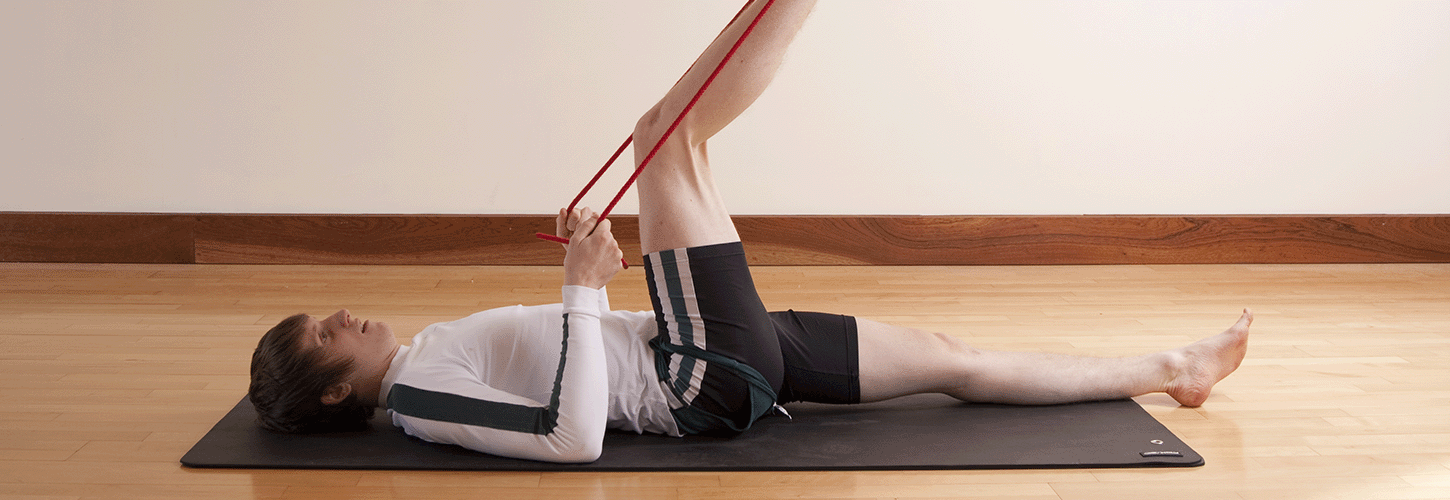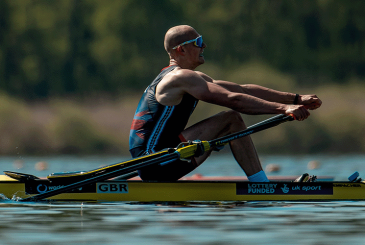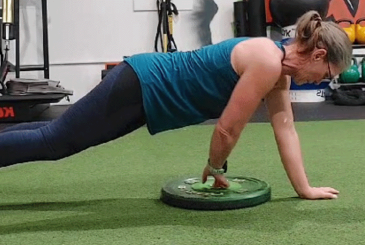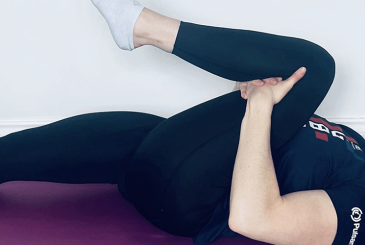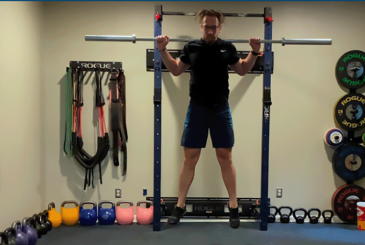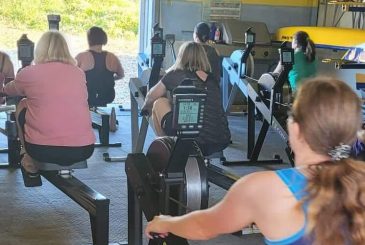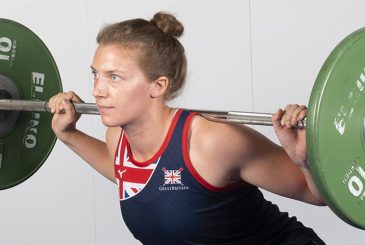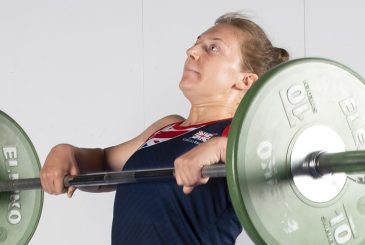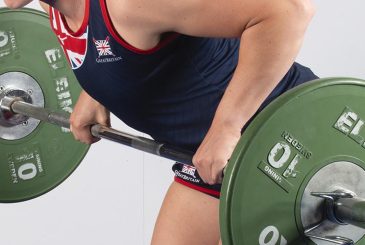Good hamstring length and flexibility is essential for the rowing stroke. Mark Edgar, previously Head of Medical Services for the GB Rowing Team, explains how you can improve your flexibility.
What are the hamstrings?
The hamstring muscle groups lie in the posterior segment of the thigh. There are four muscles on each leg and they originate at the ‘ischial tuberosity’ (the sit bones of the pelvis) and run at various angles to either side of, and just below the knee joint. Their action is to help extend the hip, to flex/bend the knee and to slow the straightening of the knee (e.g. in sprinters) at high speed. Given their position and action they have some other functions, but these are beyond the requirement of this article.
How does this relate to rowing?
The main reason why we are interested in hamstring flexibility is the ability of the pelvis to roll after the finish of the power phase of the rowing stroke, following the hands in the recovery phase.
Pelvic rotation – the rock over – takes the lumbar spine towards the stern and therefore the thoracic spine, shoulders etc. During this aspect of the recovery, with the knees held down, the rotation of the pelvis is ultimately limited by the extensibility / length of the hamstring muscle group in the healthy rower.
It is essential that rowing athletes have good hamstring length. If rock over cannot be achieved then the pelvis will not be able to rotate during the recovery phase and will not be positioned correctly at the beginning of the power phase / catch.
Finally, if the lumbar spine remains maximally flexed at the catch, then during the leg drive phase, the lumbar intervertebral discs are put under undue pressure and are liable to lead to failure, especially due to the repetitive nature of rowing and rowing training.
Assessment of hamstring length
The area or zone where we need to look when considering pelvis and lumbar (lower) spine is where the therapist’s hands are placed in the photo on the left below. In this photo, the rower has adopted the rod-up-the-back position in the thoracic (mid) spine.
Alternatively, the picture below right shows a degree of flatness in the lumbar region, where the all-in-one has been pulled down, but retains the thoracic spine ‘C’ shape.
Review hamstring length by considering the rock over position and the beginning of the recovery position.
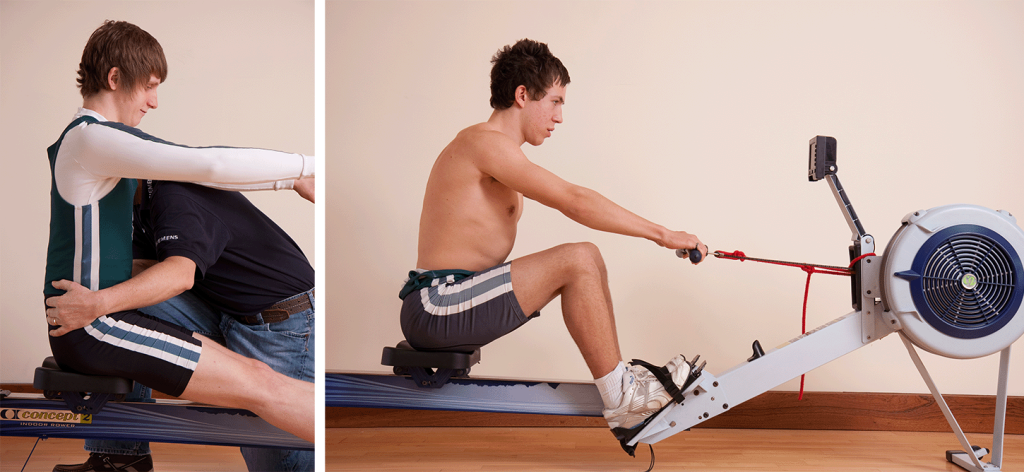
“The main reason why we are interested in hamstring flexibility is the ability of the pelvis to roll after the finish of the power phase of the rowing stroke.”
The photos below demonstrate the result of having short hamstrings at the beginning of the recovery (left). This also looks like the rod-up-the-back rower: this rower is overstraining in thinking he is rocked over and sitting up through the recovery (right) but it is all occurring in the wrong place.

The photo below shows how an inability to rock over, or failing to do so, leads to the incorrect posterior pelvic positioning at the catch (due to lack of hamstring length) and the potential to look as though you’re overreaching.
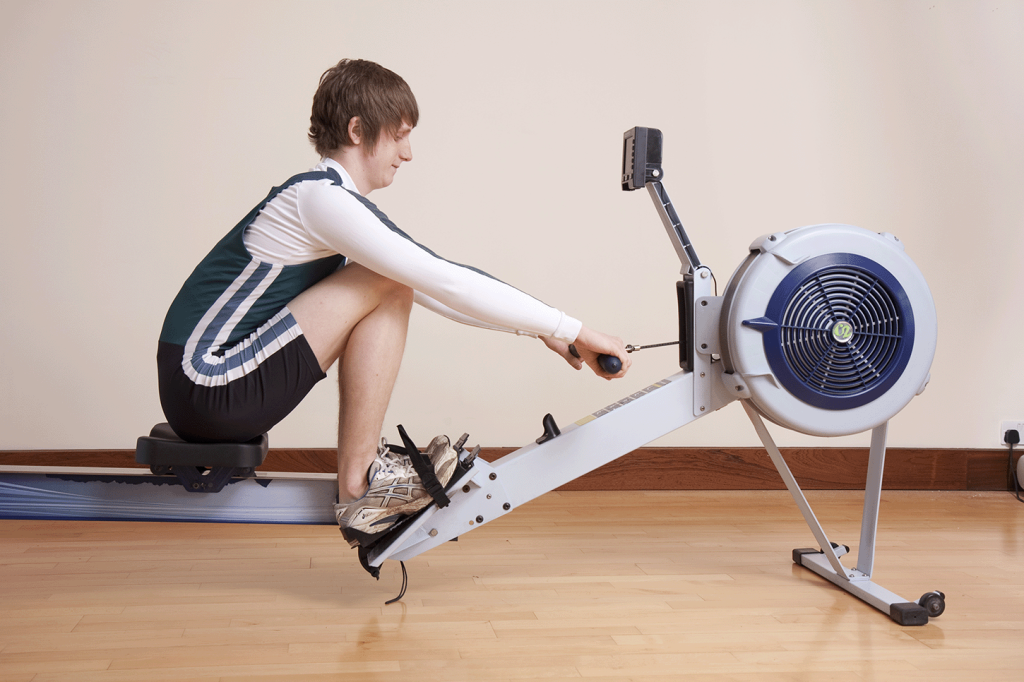
So, what can be done?
Stretching can be done in pairs…
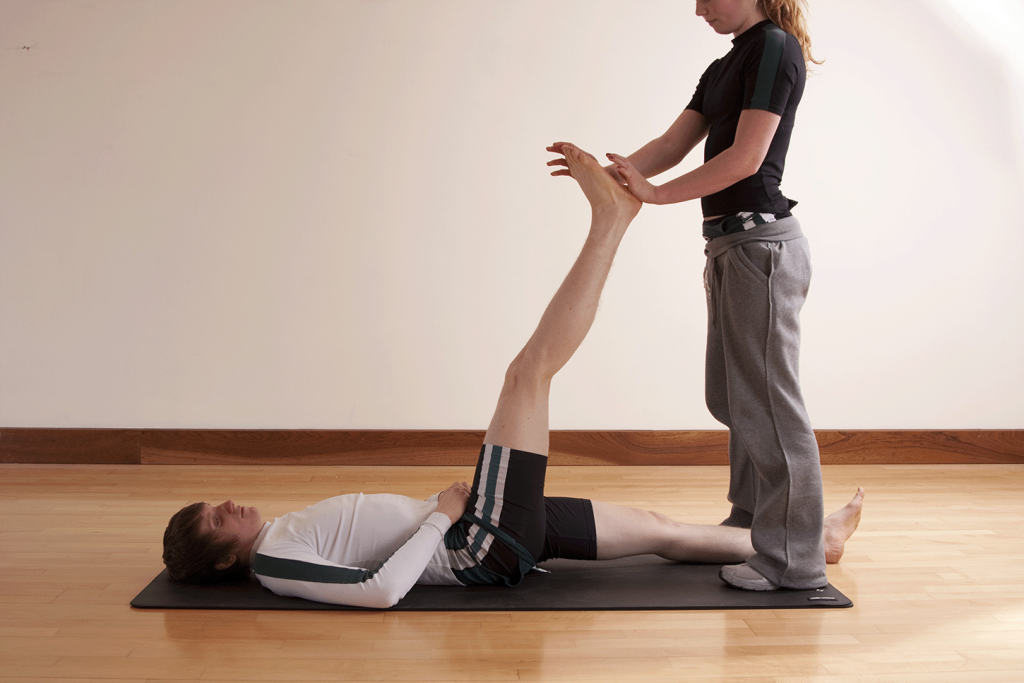
against a wall…
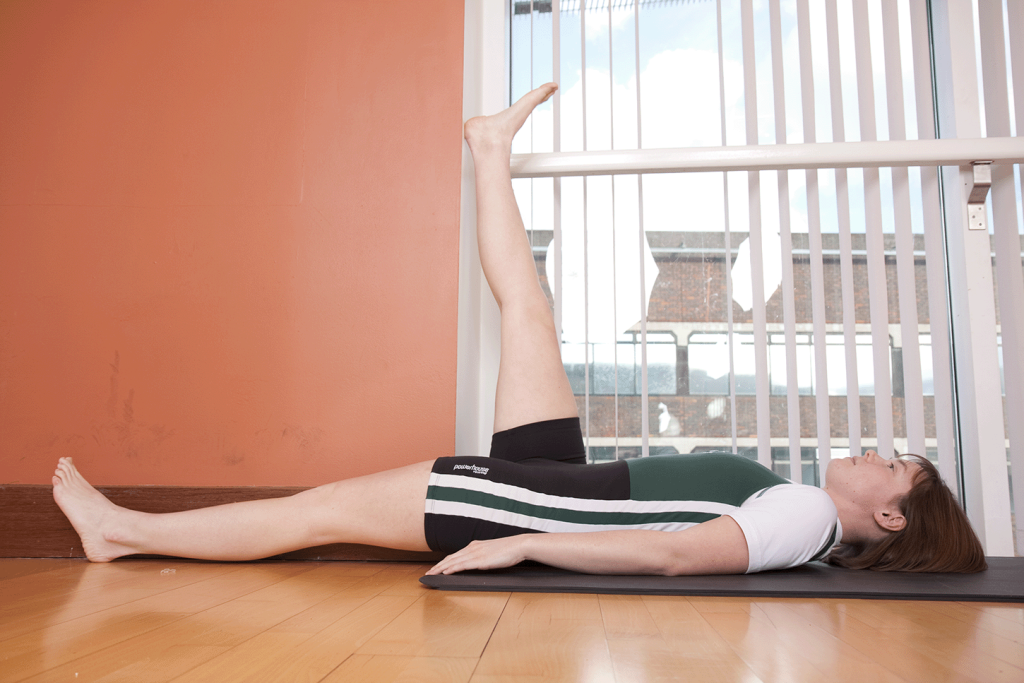
… or with a rope or stretch band.
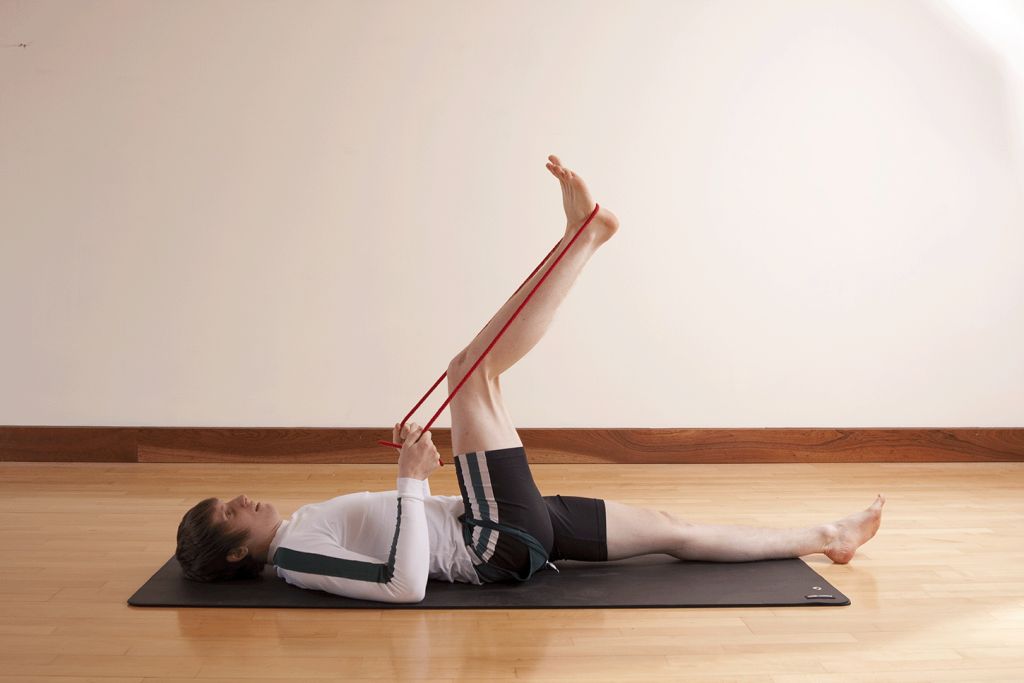
Making progress
Hamstrings are the most important muscle group to lengthen. It takes considerable time to achieve more length. This is more confused if the rower is in their adolescent years so is also undergoing skeletal growth.
Pelvic posture and positioning and hamstring length are inseparable. If there is not enough length in the hamstring to allow the correct rock over, then some of the required rock over may need to be achieved further up the slide, after the knees break so as to allow the correct position to be achieved at the catch. This may avoid the ‘rod up the back’ posture. The coach must be integrally involved in the posture and rower positioning by developing the stretching / lengthening / flexibility programme and making time to achieve the results required.
How to stretch
Hamstring stretching/lengthening/flexibility takes time. Do it slowly. Hold the lengthening stretch for 10-20 seconds on a warm (blood filled) muscle. Be soft and easy on your stretch if cold. Dynamic stretching can also be useful, but again do this with warm muscles and under supervision of a knowledgeable coach or physiotherapist – at least initially.
Stretching/lengthening/flexibility can be done many times during the day, and repeated any number of reps. Every rower is slightly different. It may be that some rowers would benefit from much more time stretching whereas others who are deemed to be flexible enough may need to do more stability/core type exercises to make the best use of time.
Tip: Ask your coach, physio or sports therapist to give you a full stretching routine, and incorporate this into every training session. Make sure you stretch after training on the water – when it’s easy to forget – as well as in the gym. Maintaining good hamstring flexibility can improve your technique.
Thanks to Maidenhead RC and David Lloyd, Maidenhead for their help with this article.
This article was first published in Rowing & Regatta magazine.


